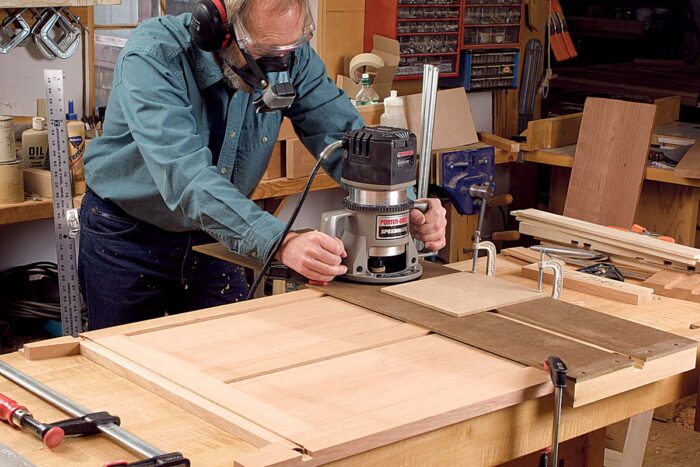Build a Computer Desk
This sturdy, attractive desk offers plenty of work surface up top and efficient storage below.

Synopsis: Maybe it’s time to give the computer a real place in your home, on a piece of furniture that works well, is built to last, and is a pleasure to live with. A blueprint for a practical computer desk with a Shaker flavor, this article walks you through the complete project construction. It highlights designing around function, building a frame-and-panel side case, and tips on installing hardware easily.
In my study at home stands a lovely, tall secretary desk with bookcase, glowing beautifully in its 20-year-old patina. For the past several years it’s been piled high with papers, notes, photos, stuff and more stuff. I make periodic assaults on the piles, but the fact of the matter is that I don’t work at the desk anymore.
I now work—doing letters, bills, e-mail—about 8 ft. away at a small table that holds the computer, with storage in a cabinet below. On some K-Mart-bought shelves lie a printer, scanner, files, and books.
Whether you have made the plunge into working from a home office or just find yourself using the computer more often, maybe it’s time to give the computer a real place in your home on a piece of furniture that works well, is built to last and is a pleasure to live with.
My original plan was for a cabinet similar to an entertainment center that could house the whole system and be closed up when not in use. But I suspect that many people work with their computer in short bursts throughout the day and week and want it out and accessible. Also, today’s computers look much more stylish than the gray boxes of a few years ago.
Another problem with a cabinet design that closes everything away is that by necessity it becomes quite large and rather awkward-looking, especially if your computer has a large monitor.
That’s how I arrived at an unobstructed tabletop, with enough room for equipment and workspace. An additional pull-out work surface is handy. Add an adaptable storage cabinet below and a keyboard tray behind a traditional drawer front, and presto, I had my solution.
Major components—monitor, processor and printer—go on top. The processor could also go on the floor, either in the footwell or up on brackets. Wires are bundled and routed out of the way.
When It Comes To Computer Desks, Think Function First
 This is a classic case of inside-out design: Begin with the function and work from there. The height is 30 in., though tall people may want to add an inch or two. The keyboard pulls out at approximately 26 in., a comfortable height. The length of the desk is 60 in. but could be extended. Stretchers support the legs at the open end and tie the design together by continuing the lower line of the cabinet.
This is a classic case of inside-out design: Begin with the function and work from there. The height is 30 in., though tall people may want to add an inch or two. The keyboard pulls out at approximately 26 in., a comfortable height. The length of the desk is 60 in. but could be extended. Stretchers support the legs at the open end and tie the design together by continuing the lower line of the cabinet.
In keeping with a Shaker aesthetic, the cabinet and doors are of frame-and-panel construction with thumbnail molding (also called sticking) on the inside edge of the frame. Classic Shaker style almost always left door panels flat (with the beveled side facing inward). The desktop edge gets a slight bullnose profile. In a departure from the Shaker style, I used brass knobs.
From Fine Woodworking #164
For the full article, download the PDF below.
Fine Woodworking Recommended Products

Sketchup Class

Blackwing Pencils

Drafting Tools








Log in or create an account to post a comment.
Sign up Log in